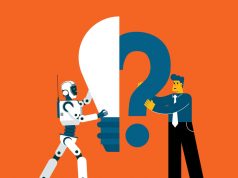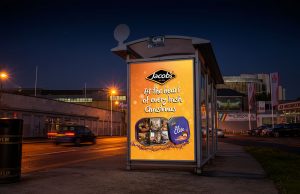 In the new marketing landscape that continues to evolve, context trumps traditional creative and the so-called Big Idea will be passed over for Big Capabilities, writes Sheena Horgan.
In the new marketing landscape that continues to evolve, context trumps traditional creative and the so-called Big Idea will be passed over for Big Capabilities, writes Sheena Horgan.
 The concept of, indeed the business rationale for, marketing, has changed irrevocably over the last few years. The very nature of what the discipline is all about has morphed with technology and data and emerged as a different animal from the mass marketing of decades gone by.
The concept of, indeed the business rationale for, marketing, has changed irrevocably over the last few years. The very nature of what the discipline is all about has morphed with technology and data and emerged as a different animal from the mass marketing of decades gone by.
Grappling with the dynamics of change, means marketers are always trying to pre-empt and then master the trends of the future. This was the subject of a recent report by the Economist Intelligence Unit called “The path to 2020: Marketers seize the customer experience” which is based on a global survey of CMOs and senior marketing executives and explores which technologies and customer trends are likely to change marketing organisations the most over the next five years.
It makes for an interesting read but not because it suggests a ground-breaking as-yet-to-be-discovered trend, but rather because it doesn’t. Despite, as a profession, our tendency to big up marketing’s progress towards a more data and technology-driven science, this report proposes a continued evolution of what we already know and are doing, but retains the importance of the brand:
The report explains that whilst marketers may have spent last ten years understanding the customer and then championing personalisation, the sweet spot now and going forward, is when the marketing blends that data – which then informs the marketing giving context regarding the consumer – with tailored, targeted and relevant content and comms.
No mean feat to be fair. The pace of media’s progress is tsunami-like and the breadth of choice facing marketers is staggering. And the report recognises the explosion of complexity in marketing as CMOs need to “manage vast amounts of data created by the pace of technology and mobile lifestyles and the constant arrival of new channels with literally billions of truncations and interactions….”
The proposed leading channels are those that can be personalised, so naturally social media leads the charge with the internet and mobile following – though the speed of the latter’s growth is not to be ignored: “The top channels to the customer in 2020 will be social media (63% of respondents), the World Wide Web (53%), mobile apps (47%) and mobile web (46%).” Traditional channels are further down the pecking order, which is not to say they will have no purpose, but certainly exposes, once again, the need for those in that space to re-invent and re-connect with consumers and audiences in a new and meaningful way.
It’s a given that experience matters. But it is the personalised customer experience that is going to be critical in 2020, with the expected benefits being enhanced loyalty and brand perception. Brand equity therefore should also be a product of effective personalised experience, and one that should keep the FDs of the future interested in marketing. I particularly like the following quote from the report (especially as it didn’t come from marketers):
“While the primary value of firms in the industrial age was derived from how well they managed hard assets such as factories, product lines and distribution channels, the information age rewards and punishes firms based on how well they manage brands.”
According to the report CMOs are endeavouring to define the single best version of the customer truth and apply this across the business. In 2020, this truth profile, this view of the customer that can be created through the collation and analysis of that entire individual’s data – purchasing and browsing behaviour, psychographics, demographics, geolocations – both historical and current, will be a key asset. CMOs striving to ascertain this single customer truth, will translate it into a personalised customer experience as its “core strategy”, to develop a well-honed and contextualised profile of the customer that they can use to personalise their preferred/desired experience across all platforms.
So because choice is almost infinitesimal, consumers are in constant referendum mode, seeking out information, comparing brands and prices, etc. The implication is context trumps (traditional) creative. That the Big Idea will be passed over for the Big Capabilities ie the things that allow brands to understand the consumer context better and then shape customised comms across all appropriate touch points.
On the basis that brands have lost the information battle – ie conceded that consumers know where the best deal is and can actively and easily find it – the battleground is back to brands and “shines a bright light on the link between what marketers say via advertising and what they do as captured by the customer experience (CX).”
I guess with so much data being known to brands about the consumer, and consumers knowing/expecting that brands have this knowledge, there’s no excuse for complacency. The experience should be everything the consumer needs, expects and more.
So both the vision put down by marketers today for 2020, and indeed the challenge, if this shared vision is correct, is to craft and execute a different value and exchange model. And have the customer truth front and centre.
First published in Irish Marketing Journal (May 2016)© to order back issues please call 016611660


























